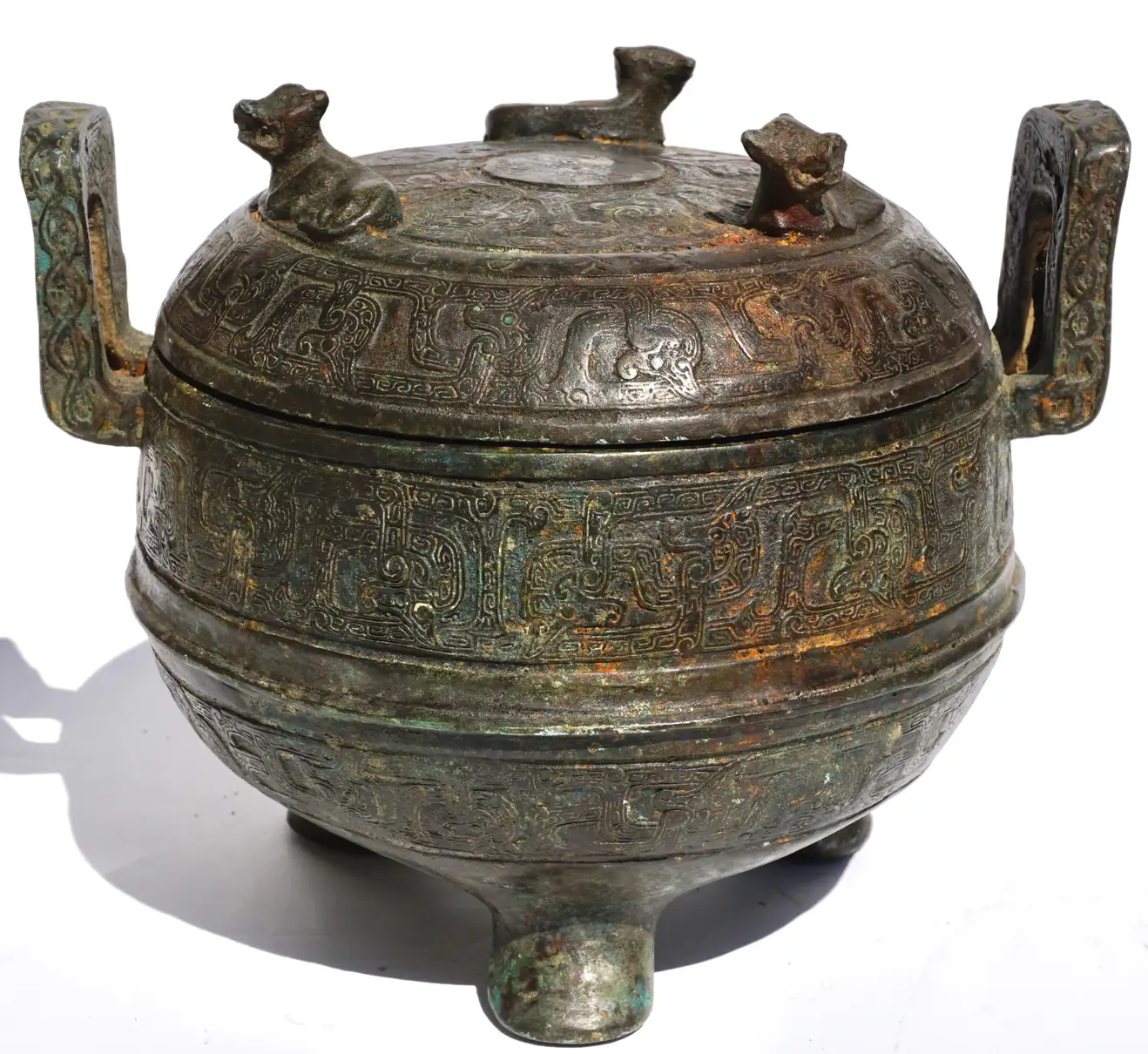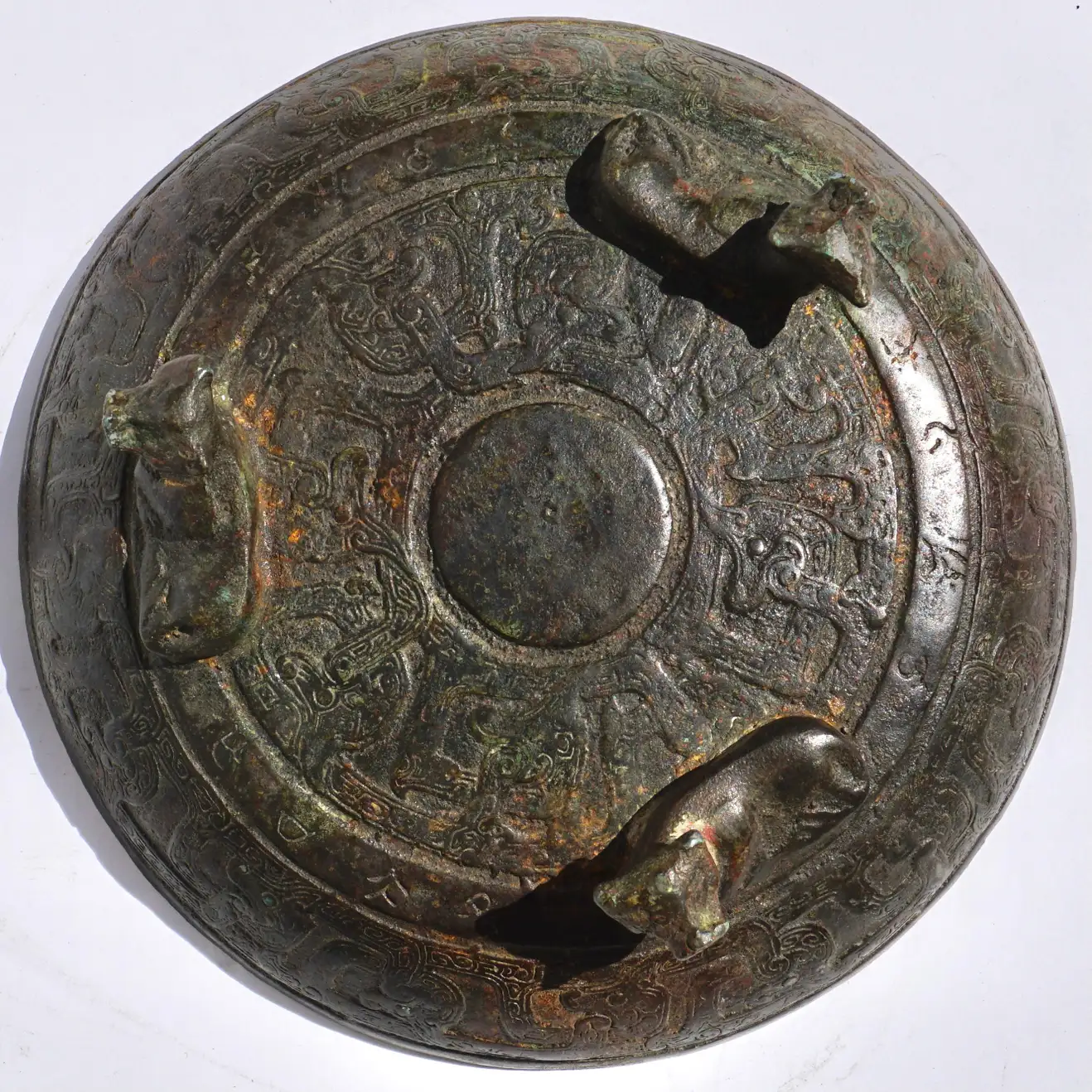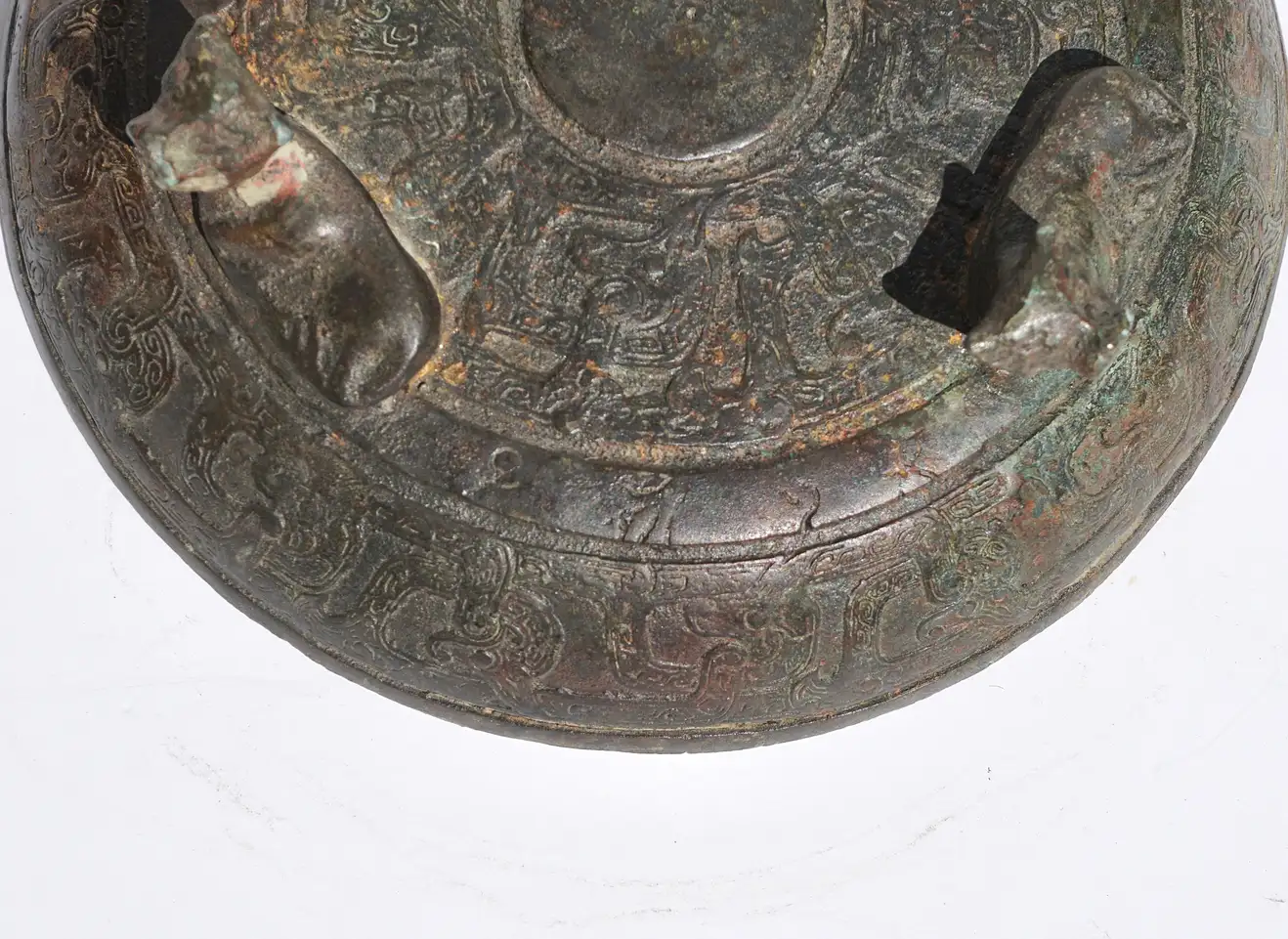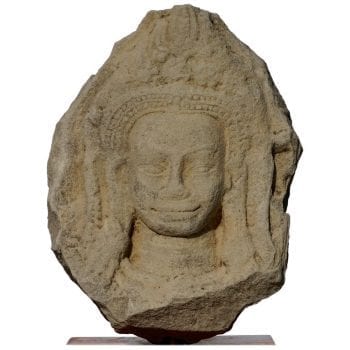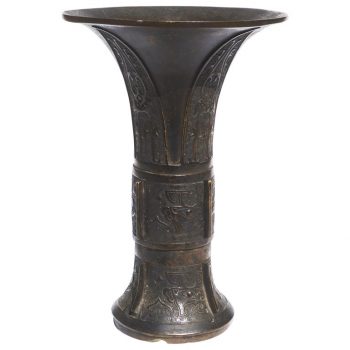Description
Chinese Bronze Archaistic Warring States Period Ding Pot.
Circa 500 BCE A beautifully shaped medium size bronze ritual vessel with three elegant feet and a lid with three bovine figures. The pot with two handles is decorated from top to bottom with archaistic script and old chinese writing with roughly 16-18 words of a lost period. The 4 bands of chiseled archaic script has dog or cat frofiles with spectacular detailing throughout.
End of Spring and Autumn period to the warring states period.
Condition: No defects or restorations detected possible dings on underside but must be in design. No in-painting detected under fluorescence. No smell or taste detected. Corrosion and green, red and yellow patina throughout. Originally had an extensive cleaning.
Diameter: 8.45 inches Height: 7 Inches
Whereas before, war was characterized as a civilized contest between aristocratic armies, during the Warring States Period (475-221 B.C.), war evolved into the chaotic conflict we know it as today. Kings and princes were replaced on the battlefield by infantries lead by military generals. Peasants were recruited to serve on the front lines. Warfare intensified, especially in terms of the duration of campaigns. New arms and armor were invented, including the halberd and crossbow. Chariots rode alongside archers outfitted in iron helmets and body armor. Defensive walls were erected in order to repel invaders. However, despite the turmoil of the times, the arts continued to thrive. Bronze casting was revolutionized by the introduction of the lost- wax technique, while the alterations of kiln structures enabled new firing techniques that resulted in fully developed glazes. Although this period was marked by almost constant upheaval, the Warring States also represents a golden age of Chinese culture and thought. A ding is essentially a tripod vessel with two raised handles. Originally, the ding was utilized for cooking meats, hung over a fire by its handles. Later, the function of the ding would evolve from the preparation of foods to the presentation and serving of foods at certain rites and festivals. Dings with inscription were primarily used for offering sacrifices to the gods. The funerary arts evolved over the ages in China to provide the deceased for all their potential needs in the afterlife. Presumably, this ding would have offered sustenance throughout eternity.
AVANTIQUES is dedicated to providing an exclusive curated collection of Fine Arts, Paintings, Bronzes, Asian treasures, Art Glass and Antiques. Our inventory represents time-tested investment quality items with everlasting decorative beauty. We look forward to your business and appreciate any reasonable offers. All of our curated items are vetted and guaranteed authentic and as described. Avantiques only deals in original antiques and never reproductions. We stand behind our treasures with a full money back return policy if the items are not as described.
Please also consider Avantique’s antique and ancient Asian Art Collection of Han Dynasty, Tang Dynasty, Ming Dynasty, Qing, and Republic period items to complete your home and office decorations with class. Avantiques has Asian pottery, terra cotta, bronze, and paintings to complement your collection. We strive to collect the highest quality Asian antiquities in exceptional condition.




